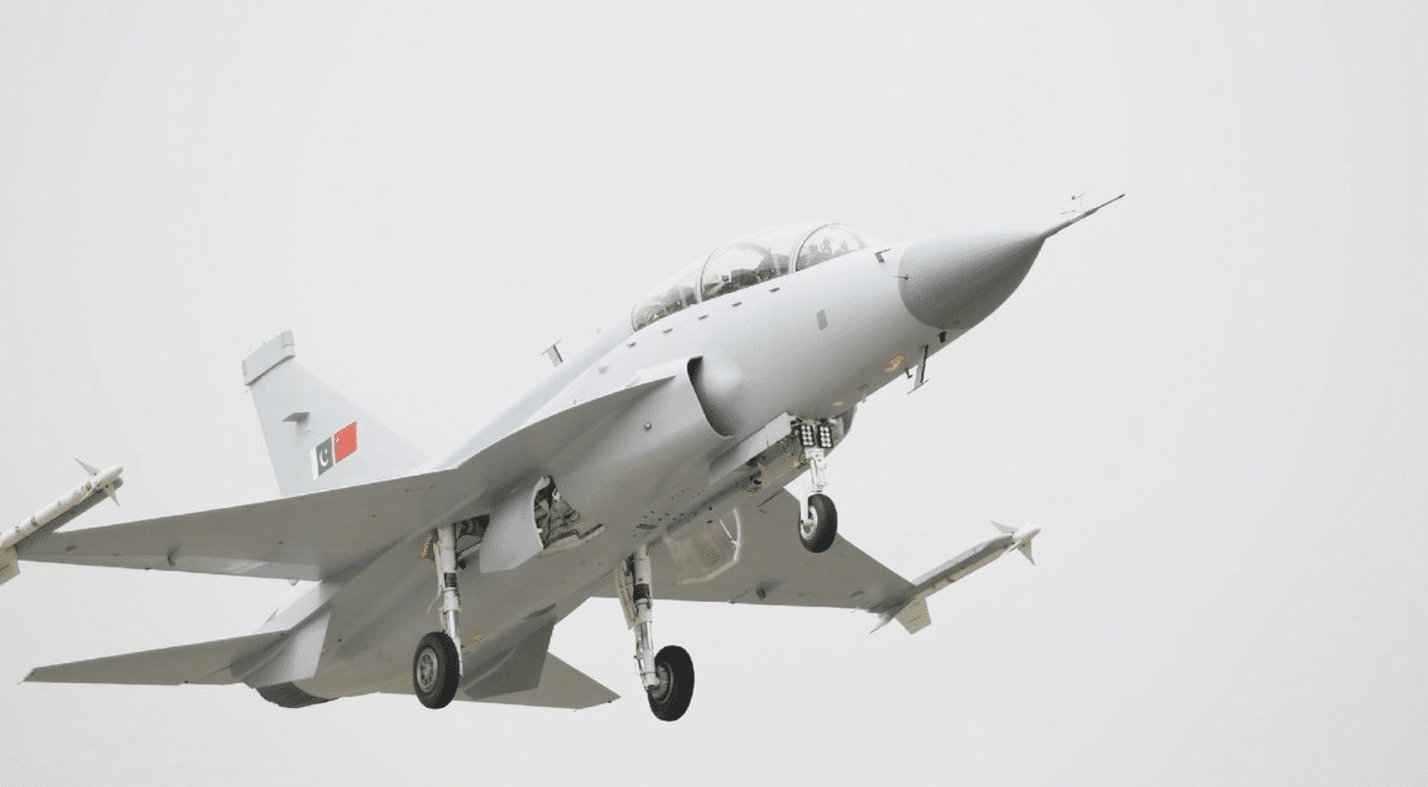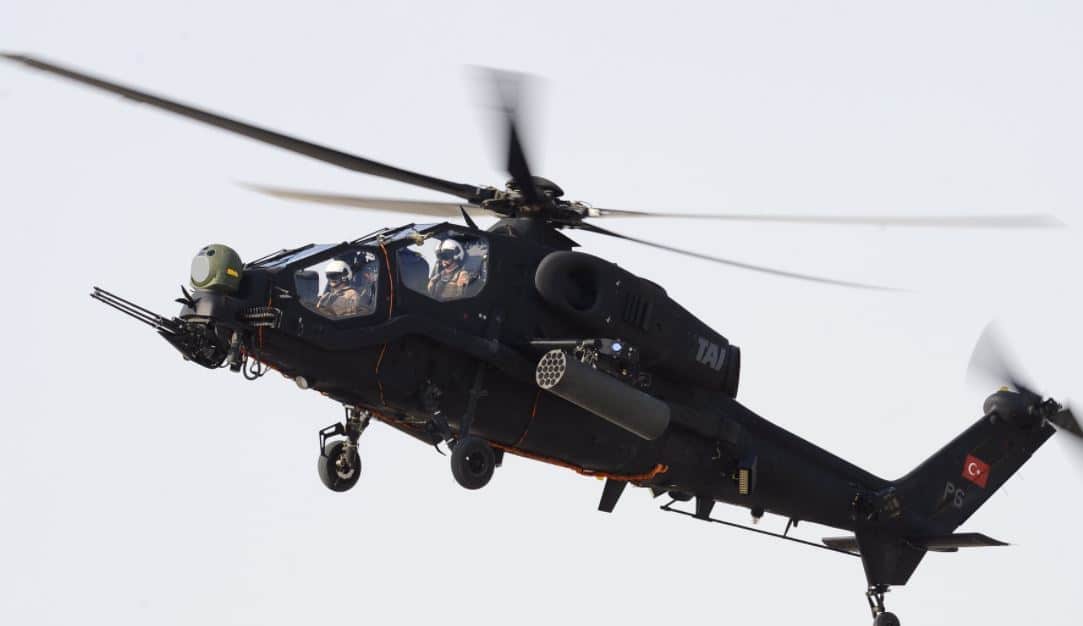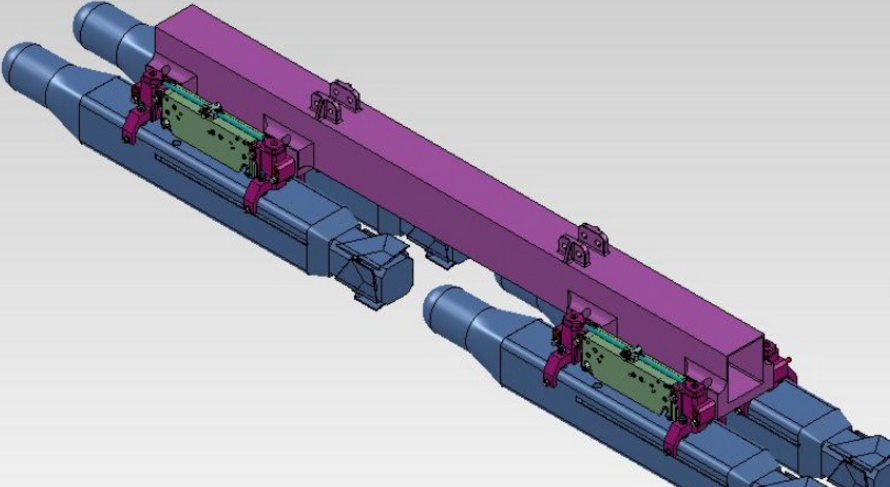2381Views 19Comments

AVIC pitches air-cooled AESA radar for JF-17
The Aviation Industry Corporation of China (AVIC) 607 research institute announced that it successfully completed the development of an air-cooled active electronically-scanned array (AESA) radar, which AVIC will pitch for the Pakistan Air Force’s (PAF) JF-17 Block-III as part of the fighter’s AESA fighter requirement.
The 607 institute, officially known as the China Leihua Electronic Technology Research Institute (LETRI), reportedly announced the news through WeChat. LETRI is also the developer of the SD-10 beyond visual-range active radar-homing air-to-air missile in service with the PAF.
As per LETRI, its air-cooled AESA radar is a first of its kind. LETRI believes that its AESA radar will help offset the internal space and power limitations of many in-service fighters, providing these aircraft with an AESA radar that is easier to integrate than liquid-cooled systems, such as the competing KLJ-7A offered by the Nanjing Research Institute of Electronics Technology (NRIET).
Notes & Comments:
The transceiver modules (TRM) of an AESA radar generate considerable heat that must be dissipated for the TRMs to function reliably (and not incur damage). This is currently done through liquid cooling, which necessitates additional space for the cooling system and additional electrical power. In contrast, the LETRI AESA radar draws from the cooling methods of current pulse-Doppler radars, which implies that this AESA radar can be fit to small aircraft with relative ease and at low-cost.
In Air Forces Monthly’s April 2017 issue, British aviation journalist Alan Warnes reported that two Chinese radars are competing for the PAF JF-17 Block-III contract – NRIET with its KLJ-7A and AVIC with LETRI’s radar. Space (for cooling) may not be a challenge for the JF-17 Block-III given that the JF-17B, embodies several of the JF-17 Block-III’s design attributes, most notably greater internal space through an enlarged nose and conversion to a triplex fly-by-wire flight control system (from the Block-I/II’s hybrid system).
The LETRI radar could potentially be a simpler affordable avenue for upgrading serving Block-I and Block-II. In fact, AVIC appears to be banking on that reality to secure orders – losing the Block-III to bid to NRIET or Leonardo would not preclude it from selling radars to the PAF. The PAF’s JF-17 Block-I/IIs would benefit from the benefits of an AESA radar without necessitating significant structural changes.



19 Comments
by Shershahsuri
Very good indeed if it really caters JFT block 1 and 2.
by Max Pane
i heard from other site that its range is not good as compared to klj7 a
by Muhammad Khurram Bhatti
How about the F-16 A/Bs in service with PAF?
by Max Pane
i heard its range is not good as compared to klj 7a
by Bilal Khan
I am going by what Alan Warnes has been reporting based on his direct interactions with the PAF and AVIC. This is from Air Forces Monthly’s April 2017 issue: “The nose is slightly larger too, allowing for future integration of an airborne electronically scanned radar.”
by Keyser
Radar range is not as big an issue with Awacs in play.
by Shershahsuri
F-16 A/Bs are to be upgraded from US only or other vendor with NOC from US. ABs are already upgraded with MLU programme. I Idont think they will upgraded further. These will now on be block 52 CDs which will take upgrades.
by Aaif khan
I suspect that this development has been evolved to Target customer for low cost block2. Plus both china-pak will be reluctant to export klj7-A as to maintain secrecy of technological capability. I don’t think Paf will use this radar because the nose cone section has been enlarge for a reason and nor Paf will configure them into block 2. Block2 along with cooled AESA advance FBW/other improve avionics will be marketed for export.
by STAN
I don’t know what you are reading in this new but I see all Pakistani aircrafts having AESA radars
by Max Pane
can i ask a question?
by Max Pane
whats the difference between pesa and aesa?
by Keyser
Thats a complicated question that luckily someone else has answered…
William Keim, Defense engineer, designed and tested phased array AESA pulse Doppler radars
Lengthy
answer here. The other answers have lots of good information, and I
even saw another answer that was downvoted with some good information,
so hopefully this will provide some good insight.
Both
AESA and PESA radars are (generally) pulsed radars. AESA as well as
modern PESA both are frequency agile and can frequency hop over
different frequencies at different times. Both can have narrowband or
wideband mode, and both can be used for ECM, passive scanning,
beam-forming, etc. The primary difference is in the source of the
high-power RF signal.
How is a radar pulse
formed? A digital pulse command is created by the radar computers which
tell it to send a pulse out in some direction. The receiver/exciter
(REX) creates the baseband pulse, which is really just a square wave,
which is used to modulate the Intermediate Frequency (IF). Signal
processing is applied to the IF pulse to compress it, shape it into
efficient Gaussian forms, etc. Then the IF pulse is used to modulate an
oscillator that is operating at the final RF frequency. This refers to
the final up-converted frequency that will be used for transmission over
the air. This modulated RF signal goes through high power amplification
and is sent to the antenna for transmission.
It is only this last step, the high-power RF generation/amplification that differs between AESA and PESA.
In PESA, there is a single high-power transmitter source, often an older device like a Klystron or a Traveling-wave tube.
These devices can amplify RF signals at microwave frequencies up to
very high powers and then there is a single antenna horn radiating the
signal out. After the signal is radiated there is an RF “lens”. An RF
“lens” is an array of thousands elements that can selectively delay a
portion of the RF signal. So by delaying the radiated RF signal in a
particular shape, beam shapes can be formed that allow the beam to be
steered or spoiled to serve specific purposes.
In AESA, the
thousands of phase-shifting elements are also themselves transmitters
and antennas. The IF signal from the REX is fed to each of the AESA
elements, along with a digital “command” which tells the element how to
delay the signal to form a particular beam. The individual element does
the RF up-conversion and power amplification, along with phase shifting
in order to form and steer a beam. Each radiating module is much less
powerful than the Klystron or the TWT, but the sum of all of the AESA
elements allows for high total power levels.
Contrary to other answers posted here, the difference in capability between AESA and PESA is less than you might think.
Both
AESA and PESA can be low probability of intercept (LPI). Being LPI
isn’t determined by anything special the modules are doing. It’s just
due to the fact that you can change your frequency with every dwell, so
that over time the average power level on any particular frequency
channel is kept very low. Both AESA and PESA can do this. It’s more
typical to do this on AESA because the oscillators and tuned amplifiers
are more modern solid-state devices, but you can do the same thing with
modern PESA as well. Also, the suggestion that you can change the
frequency with every single pulse is true, but not very practical. Few
radars do that. Unless the radar is looking up at the sky, a radar
signal will be contaminated with clutter (energy returns from other
objects in the scene). Typically this clutter is not moving, so Doppler
processing is used to separate out the clutter from the moving signals.
This is particularly important with ships doing horizon search or with
airplanes that are looking downwards (strong ground return). In order to
do Doppler processing, you must send out a series of pulses all at the
same RF carrier frequency. This “dwell” may last up to several
milliseconds until the required number of pulses is received, and then
the radar can switch to a new frequency for the next dwell. Different
methods and waveforms can be used if an airplane is trying to be
stealthy, but radar situational awareness is also minimized in those
circumstances.
Both AESA and PESA can utilize large bandwidths
for a single pulse. “Wideband” modes are typically created with separate
hardware paths in the system that utilize more advanced wideband
modules that are linear over a much larger range of frequencies.
Wideband pulses can be compressed hundreds of times tighter than
narrowband pulses allowing extremely detailed range resolution. This
feature is generated by the REX at the IF and then is up-converted to RF
by either an AESA or a PESA transmitter.
Both AESA and PESA can
be electronically steered so that a “flat panel” antenna can have a
wide viewing angle. These antennas can only be steered so far, though.
After a certain point, the phase shifting is no longer practical to form
a coherent beam. So on ships, for example, you’ll see 3 or 4 faces of
flat panel antennas around the ship. Of course an antenna can receive
energy from any direction, but the mainlobe of the antenna can
only be steered to within moderate limits and the mainlobe is what you
want for directional reception. Energy received through sidelobes will
be significantly reduced in power, and you won’t be able to determine
what direction it is being received from, so very rarely is sidelobe
energy used for target detection. Sometimes, special sidelobe pointing
is used to cancel sidelobe interference out of the mainlobe.
Both
AESA and PESA can do jamming detection, ECM, and passive scanning. All
you need to do is turn on the receiver and don’t send pulses out. The
PESA array can be steered and formed just like the AESA array. Special
signal processing once you get back into the digital electronics gives
you the real advantage in terms of doing advanced jamming detection.
Both AESA and PESA can track multiple targets the same time. Sometimes hundreds.
The
list goes on. AESA does have the ability to form multiple beams at
different frequencies at the same time, but this is less common. If you
are splitting up your beam into a beam for Freq-A and a beam for Freq-B,
then each beam is now half as powerful and will get you (1/2)1/4=84
of the range you would get if you were using the full array. Divide
that into 4 sub-beams and now you’re down to 70% of your maximum range.
You also lose monopulse processing which allows you to fine tune your
angle measurement. Without monopulse, your angle measurement is only
going to be as accurate as your beam width, and now with only half of an
array, your beam just got wider. You typically don’t need this feature
where you do two frequencies at the same time, because the radars are
pulsed. Radars are emitting thousands of pulses per second. And after
each dwell, you reset to a new target, re-steer the beam, and then send
more pulses. Both AESA and PESA can track hundreds of targets at the
same time.
The primary advantage of AESA is
logistics and SWAP (size, weight, power). With a PESA, you have a single
high-power amplifier like the Klystron or TWT. These are older devices,
require extensive cooling, and very prone to breakdowns. And when your
single source of RF amplification goes down, your whole radar goes down
and you are blind. They are expensive, fragile, and a single point of
failure. With AESA, your “high-power” amplification is now split up
between thousands of solid-state devices. Several of these AESA elements
can fail, and the overall AESA performance will be essentially
unchanged. The modules are circuit cards that can be manufactured much
more easily, and technicians can easily switch modules in and out.
With
PESA, you require a precision set of waveguides in order to get the
high power signal from the common amplification source to all of the
phase shifters. This ultimately makes the radar larger, it has special
space constraints, it is heavier, and it is more difficult to
manufacture. AESA radars only require a flat panel with all of the
elements installed. Think of it as a frame with a bunch of circuit cards
plugged in. The panel can be separated from the REX and connected only
with cables allowing it to be more easily integrated onto different
platforms.
AESA also allows the use of solid
state devices for RF generation and amplification. Single solid-state
devices were never capable of generating the power needed at a single
source for a PESA radar. But when split up over thousands of elements,
now you can use solid-state, and you end up getting much better radar
efficiency, and can take advantage of modern solid-state advances in
silicon technology.
by John Rue
If I was PAF, I would be more concerned about finding counter for S-400 system. With India being able to lock any flying PAF plane from 300-400 KM distance even if you end up having 500 strong airforce, they will all be buzzing with missile locks. Just like happened to US AWACS over Europe.
by John Rue
MAR-1 is 60-100 KM range. S-400 is 400 KM. So we are talking about PAF buying a true stealth fighter carrying a long range version of MAR-1 and then be able to lock an S-400 operator few hundred Kilometers away?
by Qasim57
Would the air-cooled AESA be inherently less performant than the liquid-cooled option, given that compromises might be made to reduce heat requirements?
Any information on the performance characteristics of these two, do they have the same number of T/R modules?
Last/third point — I really wish we’d gone for Gripen-NG style rotating dish AESA. The increased coverage area would have been welcome! Is it the cone size that prevents this?
by Bilal Khan
We’ll need to wait for the radar’s specifications. But in theory, yes, air cooling of GaA TRMs implies lower-output or fewer TRMs. As for not choosing a rotating swash plate AESA radar; AVIC told Alan Warnes that source code issues may prevent the PAF from opting for the Vixen 1000E, and the KLJ-7A and AVIC radar seem to be cost-sensitive solutions. That said, if the PAF wants a rotating array, I think it will have sent a memo to NRIET.
by Bilal Khan
Keep in mind … if India wants to eat into Pakistani airspace, then the S-400s will not be 400 km away from the border, but rather, 100-150 km away. If India wants to keep the S-400 safely away from the PAF, then it won’t necessarily cover as much Pakistani territory (probably 50-150 km or so).
The PAF will need to invest in top-quality ELINT to have a shot at ascertaining S-400 locations – if India acknowledges this is an issue, it might take a more conservative approach (e.g. moving the S-400 systems more frequently, switching the radars off, etc). It goes without saying, investment in top-quality (low-observable/low-detectable) 5th-gen fighters is key for the PAF as well, which may explain why the TFX is a factor.
by Steve
Very well crafted reply. We already have the means to push S400 at least 150km from the border with MAR-1. With the new Erieye ER with a detection range of 450 km providing ELINT and Raad ER which we can possibly fit with required seekers and/or cluster munitions having a range of 550 km flying in 50m above the deck things get even more interesting, and that is with just tweaking existing hardware. TFX is of course the long term goal. Why do you think the PAF/PA are investing in all this? India should send the 56 incher to hug the Swedes. Sorry could not resist that! Lol
by Hassan Raza
Hi Bilal, Since India has signed rafale deal I am keenly observing Jf-17 block 3 because both fighter jets will be joining in 2019 to their relevant air forces. Now with AESA radar, helment mounted display, mach 2+ speed and BVR capability can Jf-17 block 3 take on/dogfight with rafale?